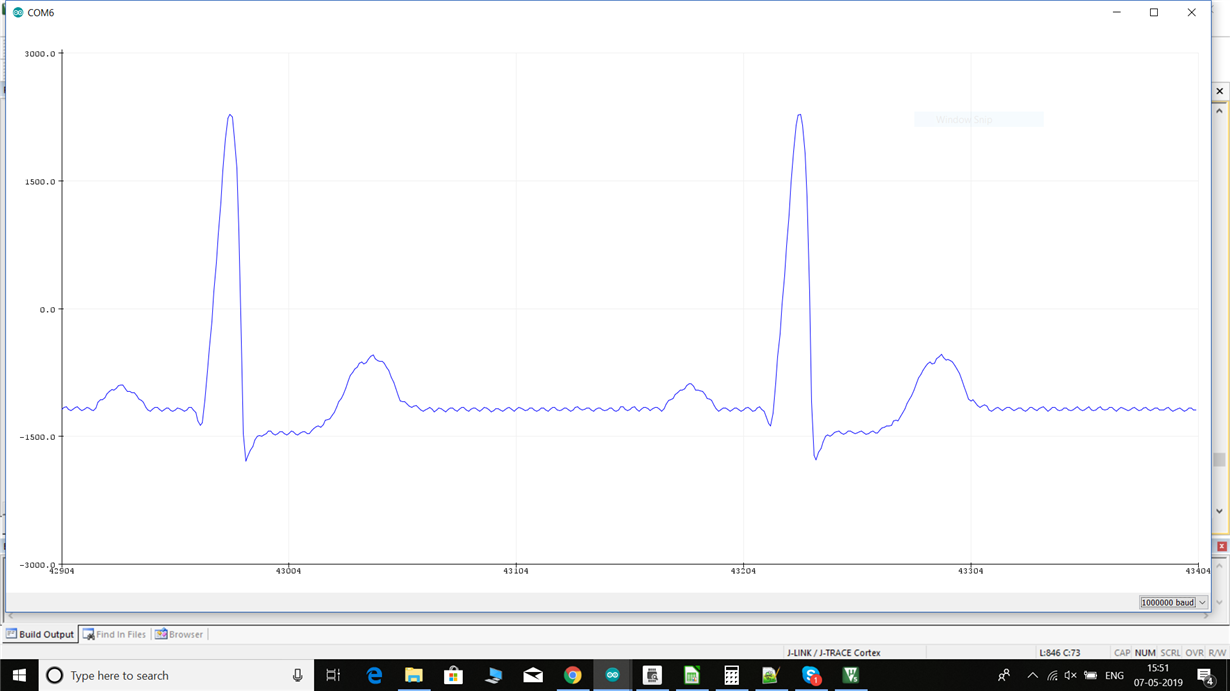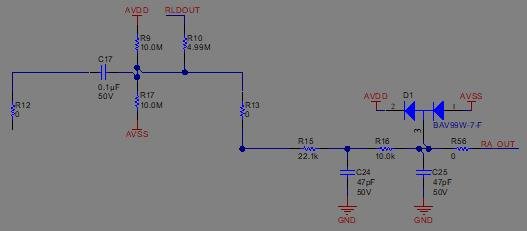Hello,
I am able to acquire the following waveform using my ADS1298R PDK by connecting a CARDIOSIM 2 simulator. However, I am getting this waveform only on Channel-2 and not on the others. The other channels don't have a valid ECG waveform even though I have configured them in a similar manner. I have tried multiple configurations and adjusting the gain, but it does not seem to make any difference. What can I do for the same? Also, on this waveform I am getting a 50Hz noise. I am using a power adapter connected to a 230V, 50Hz supply. Could it be eliminated by replacing the adapter with a battery pack? Or would I be required to use a notch filter for the same?



